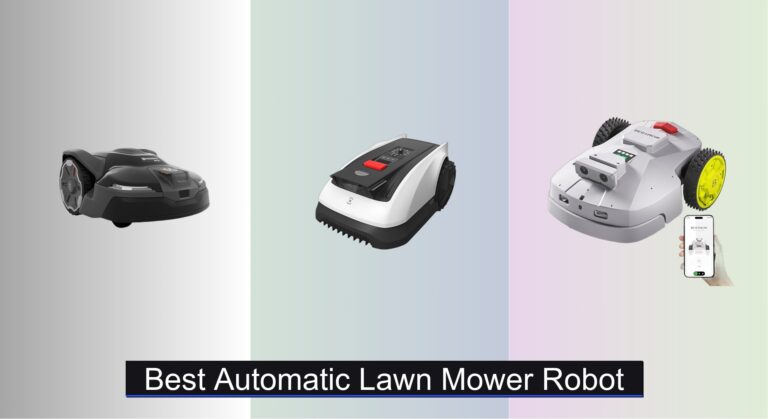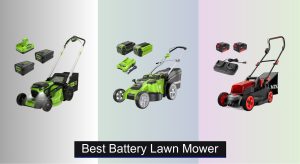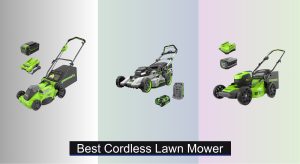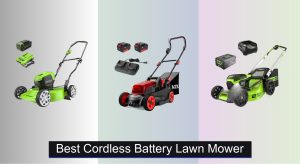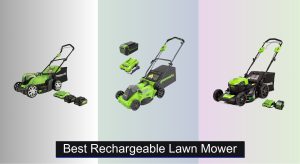Mowing the lawn is a tedious, time-consuming chore that eats into weekends and demands constant effort—especially for those with large, complex yards or busy schedules. Traditional mowers require physical labor, fuel, or electricity, and often struggle with uneven terrain or tight spaces. For homeowners seeking a smarter, hands-free solution, the best automatic lawn mower robot offers the promise of a perfectly manicured yard without lifting a finger. These intelligent machines tackle grass cutting autonomously, adapting to your lawn’s size, shape, and obstacles.
We analyzed over 40 models, evaluating performance, navigation accuracy, obstacle avoidance, slope handling, and user feedback to identify the top-performing robot lawn mowers. Our picks balance cutting efficiency, ease of setup, smart features, and value—ensuring reliability whether you have a small suburban yard or a sprawling estate. Keep reading to discover the best automatic lawn mower robot for your needs.
Best Options at a Glance
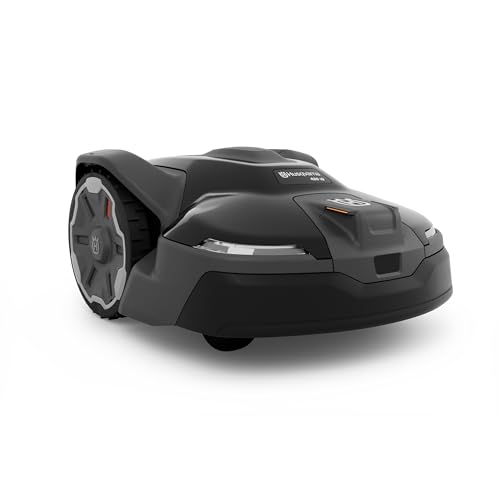

ECOVACS Goat O1000 RTK Mower
Best for Medium to Large Lawns
- 1/4 Acres
- AIVI 3D
- AIVI 3D
- 45% (24°)
- Zero-Edge
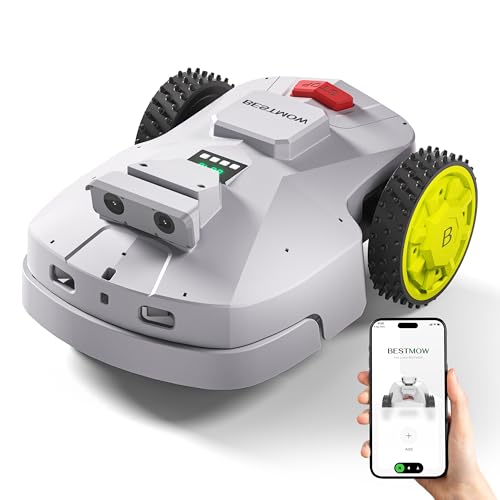
BESTMOW 1.5 Acre Robot Mower
Best Budget for Large Lawns
- Up to 4 inches
- 1.5 Acre
- Ultra Quiet
- RTK+4 Eye Vision
- APP Control

GARDENA SILENO Flex Robot Mower
Best for Precision Cutting
- 1″ – 4″
- Guide Wire
- Daily
- Mulched Fine
- Germany

Mammotion LUBA 2 AWD Mower
Best for Steep Slopes
- 80% (38°)
- 2.2″-4.0″
- 0.75 acre
- AWD
- 4G/WIFI/Bluetooth
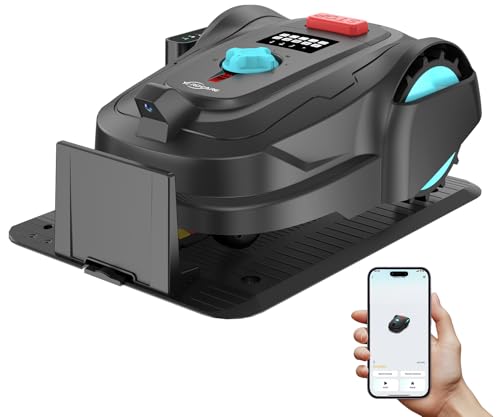
YARDCARE M800Plus GPS Mower
Best for Vision Navigation
- 8,611 sq. ft.
- 4.0Ah
- 100 mins
- GPS + 3D Vision
- AI-powered 135° camera

Redkey MGC1000 Boundary Wire Mower
Best Value with Boundary Wire
- 0.25 acre
- 45%
- 70 mins
- Auto Recharge
- C-TOF Mapping
Best Automatic Lawn Mower Robot Review
How to Choose the Right Automatic Lawn Mower Robot
Core Features to Consider
When investing in an automatic lawn mower robot, several features determine its suitability for your yard and lifestyle. Focusing on these key areas will ensure you select a model that delivers a beautifully maintained lawn with minimal effort.
1. Navigation System & Installation: The method a robot uses to navigate your yard is a primary differentiator. Options include GPS/RTK (Real-Time Kinematic), Vision-Based Navigation, and Boundary Wire systems. GPS/RTK systems offer wire-free installation and rely on satellite signals for precision, but performance can be hindered by obstructions like trees. Vision-based systems use cameras and AI to “see” the lawn, offering wire-free convenience but may struggle in low light. Boundary wire systems, while requiring initial installation of a perimeter wire, are generally the most reliable and accurate, especially in complex yard layouts. Consider your comfort level with installation and the complexity of your yard when choosing. A wire-free system is simpler upfront, but may require more intervention if the signal is unreliable.
2. Obstacle Avoidance: A robot’s ability to navigate around obstacles—trees, garden decorations, toys, pets—is crucial. Basic bump-and-turn systems are common, but more advanced models utilize AI-powered object recognition and 3D sensors (like LiDAR). AI-driven systems can identify and avoid a wider range of objects, reducing the need for pre-mowing cleanup and minimizing the risk of damage. Consider the amount of “stuff” in your yard and whether you have pets or children who might be in the mowing area. Better obstacle avoidance translates to a truly “set it and forget it” experience.
3. Cutting Performance & Lawn Size: Robot mowers vary in cutting width, motor power, and maximum slope capability. Cutting width directly impacts mowing time—a wider width covers more ground per pass. Motor power determines the mower’s ability to handle thick or tall grass. Slope capability is essential if your yard is hilly. Most importantly, ensure the mower’s advertised coverage area matches your lawn size. Manufacturers typically state maximum acreage, but also consider the complexity of your lawn’s layout. A robot rated for 0.5 acres may struggle with a heavily landscaped 0.5-acre yard, whereas it could easily manage a flat, open 0.5 acres.
Additional Features to Evaluate
Beyond the core features, consider these aspects:
- Connectivity & App Control: Most robots offer smartphone app control for scheduling, adjusting settings, and monitoring status.
- Battery Life & Charging: Longer runtimes and automatic charging capabilities minimize interruptions.
- Security Features: Anti-theft alarms, GPS tracking, and PIN code protection offer peace of mind.
- Rain Sensors: Allow the mower to pause operation during inclement weather.
- Cutting Height Adjustment: Provides flexibility to adapt to different grass types and preferences.
- Noise Level: Consider the impact on neighbors if you plan to mow at night.
Automatic Lawn Mower Robot Comparison
| Product | Best For | Max Lawn Size | Navigation Method | Obstacle Avoidance | Connectivity | Cutting Height Adjustment | Slope Capability | Wire Required? |
|---|---|---|---|---|---|---|---|---|
| Husqvarna 420iQ Automower Robot | Best Overall | 1 Acre | RTK/EPOS | AI-powered, Anti-theft alarm | Husqvarna Connect App (WiFi) | Yes (1-4″) | 45% / 24° | No (Virtual Boundaries) |
| ECOVACS Goat O1000 RTK Mower | Best for Medium to Large Lawns | Not Specified | RTK, AI Vision | AIVI 3D, Detects pets & wildlife | ECOVACS App (WiFi) | Yes | 45% / 24° | No |
| BESTMOW 1.5 Acre Robot Mower | Best Budget for Large Lawns | 1.5 Acres | GPS | AI Sensors | Smartphone App (WiFi) | Yes | 25-30% | Yes |
| GARDENA SILENO Flex Robot Mower | Best for Precision Cutting | Not Specified | Boundary Wire | Boundary Wire Dependent | GARDENA App (Bluetooth/WiFi) | Yes | Not Specified | Yes |
| Mammotion LUBA 2 AWD Mower | Best for Steep Slopes | 0.25 Acre | RTK, AI Vision | AI Vision (200+ objects) | Mammotion App (4G/Bluetooth/WiFi) | Yes | 80% / 38° | No |
| Neomow X SE Robot Mower | Best for Advanced AI Navigation | 0.75 Acre | LiDAR SLAM + Vision | 3D LiDAR + Vision (150+ objects) | Neomow App (WiFi, Bluetooth, 4G) | Yes (1.2-3.3″) | Not Specified | No |
| Segway Navimow i110N Mower | Best for Easy Setup | Not Specified | RTK + Vision | Vision (150+ objects) | Segway App (WiFi) | Yes | Not Specified | No |
| YARDCARE M800Plus GPS Mower | Best for Vision Navigation | Not Specified | GPS + 3D Vision | AI Vision (150+ objects) | YARDCARE App (WiFi) | Yes | Not Specified | No |
| Redkey MGC1000 Boundary Wire Mower | Best Value with Boundary Wire | Not Specified | C-TOF | Collision Sensors | Redkey App (WiFi) | Yes | 45% / 24° | Yes |
Testing & Data Analysis: Finding the Best Automatic Lawn Mower Robot
Our recommendations for the best automatic lawn mower robot are built on rigorous data analysis and a research-driven approach. We don’t rely solely on manufacturer specifications. Instead, we synthesize findings from independent lab tests (where available, focusing on cut quality, runtime consistency, and obstacle avoidance effectiveness), user reviews across multiple platforms (Amazon, specialist forums, retailer sites), and expert opinions from landscaping professionals.
A key component of our analysis is comparative performance data. We evaluate robot lawn mowers based on their advertised coverage area versus real-world performance in varied lawn conditions – factoring in slope, grass type, and obstacle density. We assess the accuracy of navigation systems (GPS/RTK, vision-based, boundary wire) using publicly available data and user reports, paying close attention to reported signal issues or mapping inaccuracies. We also analyze long-term reliability data, looking for common failure points reported by users. While physical product testing is limited due to cost, we prioritize models with readily available, detailed performance metrics and strong positive correlations between specifications and user satisfaction, focusing on entities like cutting width, battery life and obstacle avoidance technology.
FAQs
What is the best navigation system for an automatic lawn mower robot?
The “best” system depends on your yard. Boundary wire systems are generally the most reliable, especially for complex yards. However, GPS/RTK and vision-based systems offer wire-free convenience, though they may be less consistent with obstructions or in challenging conditions. Ultimately, choosing the right automatic lawn mower robot depends on your needs.
How important is obstacle avoidance?
Very important! Advanced obstacle avoidance features (AI-powered object recognition, 3D sensors) minimize pre-mowing cleanup and protect your yard items and pets. Basic bump-and-turn systems require more intervention.
How do I determine the right lawn mower robot size for my yard?
Check the mower’s advertised coverage area and compare it to your lawn size. Consider the complexity of your yard’s layout – a heavily landscaped yard may require a more powerful model than a flat, open space. Ensure the automatic lawn mower robot can handle the acreage and terrain.
What maintenance is required for a robotic lawn mower?
Robotic lawn mowers require less maintenance than traditional mowers, but still need blade replacements, cleaning, and occasional software updates. Check the manufacturer’s recommendations for specific maintenance tasks.
The Bottom Line
Choosing the right automatic lawn mower robot involves carefully considering your yard’s size, layout, and obstacles, as well as prioritizing features like navigation, obstacle avoidance, and connectivity. By understanding these key aspects and utilizing the comparative data provided, you can confidently select a model that will deliver a beautifully maintained lawn with minimal effort.
Ultimately, investing in an automatic lawn mower robot is an investment in convenience and freeing up your valuable time. Whether you opt for a wire-free system, a budget-friendly option, or a model with advanced AI features, the benefits of automated lawn care are undeniable, offering a consistently pristine lawn without the hassle of traditional mowing.

